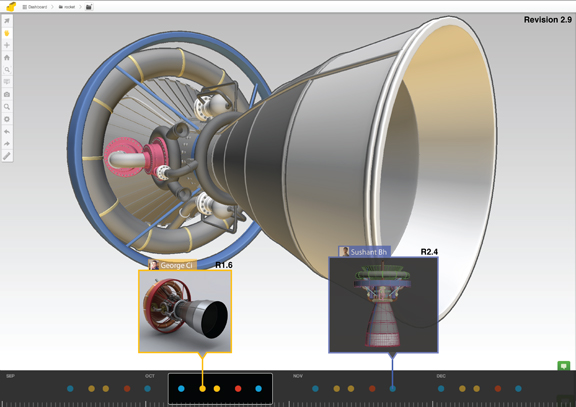Latest News
March 8, 2013
Space, the final frontier, is no longer restricted to NASA and government agencies. It’s now open to private citizens and companies, spurred by incentives like the Google Lunar X Prize. So it wouldn’t be far-fetched to imagine an open-source rocket engine printed in a 3D printer in the near future, right?
Make that future today. At SXSW, the techno-musical Woodstock of the Facebook generation, DIYROCKETS and Sunglass are launching a contest to invite you, me, and everybody to design a rocket engine. In the joint announcement from the two companies, they wrote, “The competition ... challenges makers, designers and space entrepreneurs to create open source rocket engines that will serve the growing market for small payload delivery into low earth orbit and ultimately, disrupt the space transportation industry.”
DIYROCKETS said its mission is “to lower the cost of space exploration as much as possible by generating extremely low-cost knowledge and technology through open sourcing and crowd-sourcing.”
Sunglass, a cloud-based CAD viewing and collaboration technology developer, is offering up its platform as the hub for competing teams to share ideas and work together in virtual rooms. Sunglass supports common CAD file formats, including SolidWorks, Autodesk Inventor, Rhino, and CATIA. (For a review and video report of the product, please visit this previous blog post.)
Sunglass is also kicking in $10,000’s worth of prizes for the winning designs, focusing on technical aspects, and collaborative teamwork. So how would you manufacture your invention into something tangible? That’s where Shapeway.com comes in. As a sponsor, the 3D printing service provider is offering $500’s worth of printing services to produce the top two designs.
Among the judges are Dean Kamen, the Segway’s inventor and founder of the FIRST robotic competitions; Taylor Wilson, one of the youngest nuclear scientists (currently age 16); and Angelo Vermeulen, commander of the NASA-funded HI-SEAS mission. (HI-SEAS took place on Earth, but it’s designed to explore food preparation strategies for space travel. Angelo and other crew members learned, for example, how they might whip up a bowl of soup with summer sausage and fresh kale on Mars.) Dean and Angelo will be joined by other judges from NASA, MIT, and TED.
The purpose of the contest, according to the event home page, is “to promote innovation and cost effectiveness in small payload delivery through the development of open source collaboratively designed 3D printed rocket engines.”
To find out more or register, aspiring rocket scientists can visit the contest page here.
Subscribe to our FREE magazine, FREE email newsletters or both!
Latest News
About the Author
Kenneth Wong is Digital Engineering’s resident blogger and senior editor. Email him at [email protected] or share your thoughts on this article at digitaleng.news/facebook.
Follow DE






